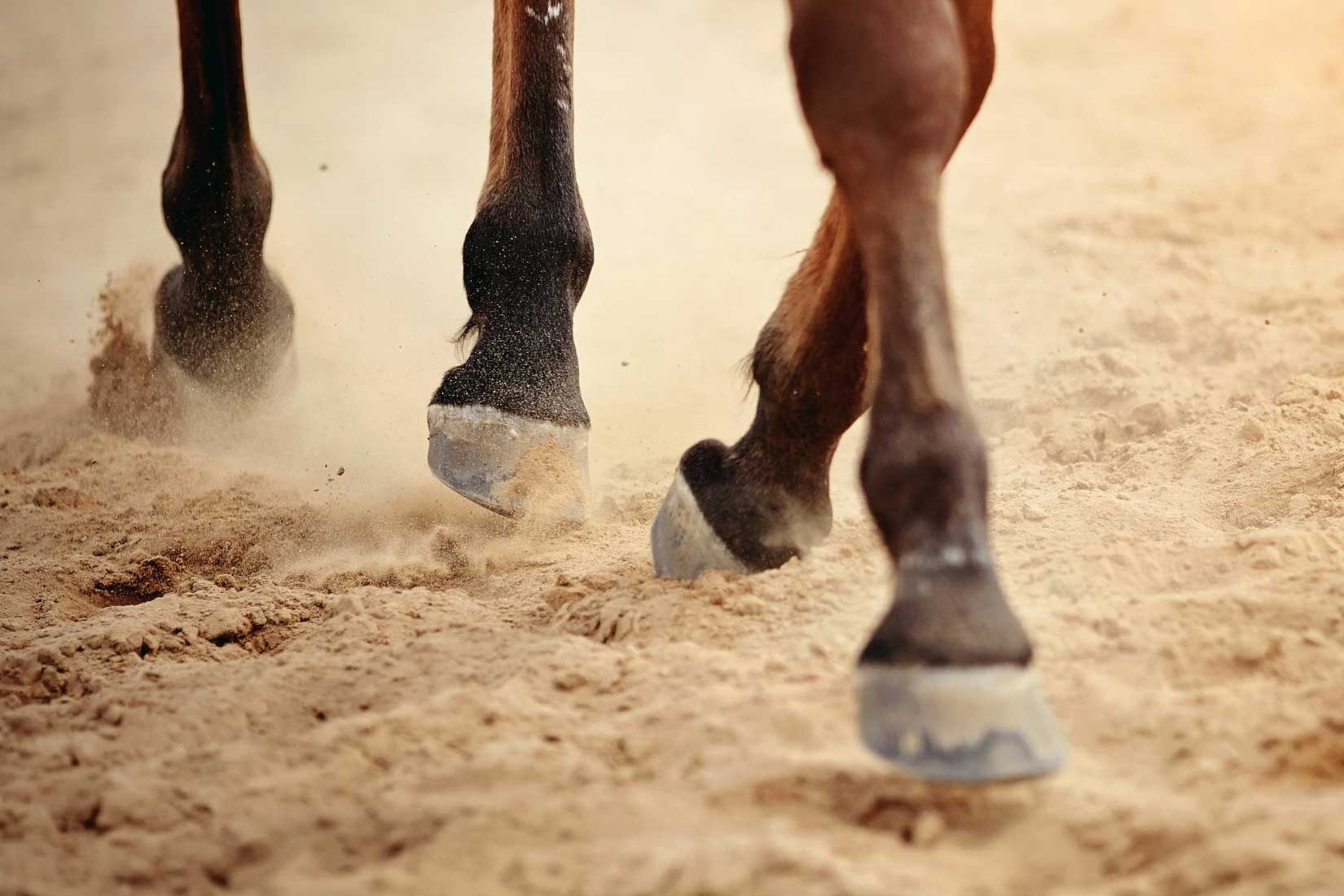14 daily steps for healthy hooves
Keeping your horse’s hooves healthy
Knowing how to maintain healthy hooves is a must for horse owners and equestrians alike. We all heard the old saying: “No hoof, no horse” and it still holds true now as it did then. Hooves are the foundation on which horses rely on to hold their body weight, absorb shocks and protect the underling hoof structure; they also assist in blood circulation. So healthy hooves are essential for improving the life quality of your horse.
A horse’s outer hoof is made of more than 90% keratin, the same protein that forms our fingernails. It grows at a rate or about 1cm/month (less during winter). The goal of a hoof care program should be to retain elasticity, moisture and circulation in the hoof during its growth; these elements are affected by many factors including environment, moisture, nutrition, exercise and overall general health.
 Environment:
Environment:
Special care should also be given to the stable and the places where your horse spends most of the time. The bedding should always stay clean and dry so the horse is not standing in urine or manure. Annoying flies can also instigate stomping and that can lead to concussion on hoof walls.
Overfilling or slight leaks in water troughs can lead to water puddles underneath exposing the hooves to an unnecessary wet environment.
Moisture:
Inconsistent moisture levels are one of the main reasons that can affect the health of hooves. If the hooves are exposed to water, they start to expand, soften and their moisture content increases and when the conditions become drier they contract and dry out. This continuous change is a recipe for disaster that can badly affect the hooves health and risking the shoe nails to slightly loosen and cracks to start appearing.
Nutrition:
A good nutritional program is as important to the hooves as the overall health on your horse so it is important to feed your horse with a balanced diet appropriate for the horse’s size, activity level and life stage. Minimum levels of Iodine 1mg/day; Methionine 2500mg/day and Zinc 250mg/day are also recommended for improving hoof quality.
Exercise:
Increasing blood circulation through exercising can positively impact hoof growth as it benefits from the increase in blood being pumped through the vessels connected to the hoof and specially the frog.
General health:
There are a few diseases that can affect the hooves of a horse and while avoiding them is always better than treatment, at least early detection can save you and your horse some sleepless nights.
- Thrush can mainly affect the frog and it is easily detected by the foul smell in the frog clefts. It is mainly a result to dirty or wet hooves.
- Foot abscesses is evident by pain and lameness that you can see walking your horse. This is usually a pocket of pus that is trapped beneath the sole or toe.
It is always best to check with your vet at the early signs of any suspected issues.
Hoof Care Daily Routine
- Carefully inspect the horse’s feet, making sure there is no debris trapped underneath the shoe or alongside the frog.
- Use a stiff hoof brush to clean stubborn dirt from the sole. This will enable you to see any discoloration and recognize any infection-related symptoms in the frog.
- Look for uneven wear on the underside of the shoes or on the hoof walls if he’s unshod.
- Inspect the shoe nails for any sprung or loosening that might affect shoe stability.
- Check if there are new cracks or any fluctuation in temperature between both sides of the hoof.
- Use a damp cloth to clean the hooves rather than washing it with water to avoid thrush, abscesses or white line disease.
 In a particularly dry environment like here in the Emirates your horse’s hooves are probably dry, using a hoof salve can provide a healthy moisture balance. It is not usually necessary to apply hoof moisturizers to the sole but if desired, limit this to once or twice a week to avoid over-softening.
In a particularly dry environment like here in the Emirates your horse’s hooves are probably dry, using a hoof salve can provide a healthy moisture balance. It is not usually necessary to apply hoof moisturizers to the sole but if desired, limit this to once or twice a week to avoid over-softening.- Use a natural based hoof oil to increase hoof strength and keep hoof wall, sole and heel supple and healthy.
- A well balanced diet with good quality pasture/hay is a key to healthy hoof. Supplement the diet with micronutrients to boost hoof integrity.
- Build a relationship with a qualified farrier to assess and trim the hooves once every 6 weeks more or less as required by your horse.
- Ensure your horse’s bedding is kept as clean and dry as possible to minimize excess moisture on hooves and providing a healthy environment.
- Provide indoor comfort for horses using an insect repellant to keep away those irritating pests and a gentle airflow to help keep insects from landing.
- Include exercising as part of your daily routine to promote blood circulation which is critical for healthy hooves.
- Check the horse’s digital pulse on each leg. A strong pulse is an indicator of pain or inflammation due to bruises or abscesses. Those signs should not be ignored and serve as an alert for calling the vet.
Featured in this article
-

 Select optionsQuick View
Select optionsQuick View -
 Select optionsQuick View
Select optionsQuick View -

 Select optionsQuick View
Select optionsQuick View



